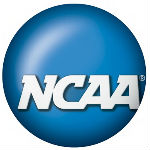 A couples weeks ago in Indianapolis, the NCAA men’s basketball rules committee met to discuss proposed changes in the rules for next year’s college hoops games. The group will also coordinate with the NABC Board of Directors and the NCAA Division I Championship Committee for the first time.
A couples weeks ago in Indianapolis, the NCAA men’s basketball rules committee met to discuss proposed changes in the rules for next year’s college hoops games. The group will also coordinate with the NABC Board of Directors and the NCAA Division I Championship Committee for the first time.
There has been speculation in the press that one change would be to reduce the shot clock from its current 35 seconds to 30 reducing the time that a team has to put the ball on the rim after taking possession. However, it appears that we are going to stay with the 35 second shot clock for the foreseeable future.
Committee Chairman John Dunne of St. Peters said, “We talked a lot about the rules that are currently in place and ultimately believe a focused effort con calling the rules as written will have an immediate and significant impact.”
The biggest change in the rules will come in the form of blocking & charging calls. A defensive player is no longer permitted to move into the path of an offensive player once he has started his upward motion with the ball to attempt a field goal or a pass. If the defender is not properly set up before that point and blocking foul will be called.
Special attention will be given to hand checking focusing on defensive players using arm bars to impede progress, putting two hands on an opponent, keeping hands or forearms on opponents and also continuous jabs.
The committee is concerned by the record low scoring games of the past couple of years and is looking for ways to open up the game a bit and get more buckets for the fans. Any and all of these rule changes proposed by the committee must win the approval of the Playing Rules Oversight Panel which will be meeting on June 18th.
The “Elbow Rules” are also up for revision. Currently if a foul is called for elbow contact above the shoulders, the monitor may be used to determine if a flagrant foul has been committed.
If officials have to use the monitor to review a situation that was not called on the floor, there are only 3 options available to them for a call. It must be Flagrant 1, Flagrant 2 or no foul. A Flagrant 1 foul awards the player who was struck with the elbow two free throws and possession of the ball. A Flagrant 2 foul is the same except that the offending player is ejected from the game.




